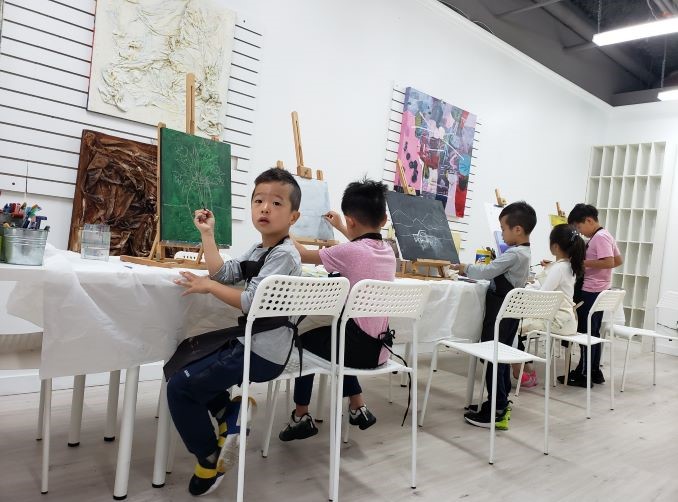International Arts Academy (IAA) – Vancouver is an arts school that offers technical and conceptual training to students of all ages, based on their own specific goals and their artistic ambitions. We spoke with the Director, Mila Kostic, a Canadian visual artist who has been a curator, educator, and facilitator of visual and community-based arts for over twenty years, to learn more about them.

What is your business called and what does it do?
Located in the heart of Vancouver in the hip West Point Grey area, IAA- Vancouver is an arts school which provides students of any age both technical and conceptual courses based on their individual goals and artistic aspirations. Whether it is a beginner-level elementary school student, high school arts student who is preparing a portfolio for university admission or a retired adult trying to find an artistic voice, IAA’s philosophy is not to teach through imitation or some sort of paint-by-numbers template but, rather focus on encouraging each student to set goals and become engaged in the creative process while providing technical and inspirational guidance along the way.
What made you want to do this work?
Art is who I am. It’s in my blood. In addition to being a practicing visual artist, I own my own gallery where I also act as an art dealer, broker and curator. With this backdrop, it seemed a logical extension for me to set up my own instructional school. I was also able to draw on my passion for the arts, considerable breadth of experience in the management of events and programs and history of developing innovative marketing strategies and campaigns.
What problem did you want to solve with the business?
Over the years, I have become increasingly aware of how many art schools in the Vancouver area are relying too much on a cookie-cutter, one-size-fits-all approach. I often see students from particular schools coming to me with copies of the same drawing or sketch with evaluative comments referencing the extent to which they were able to replicate the same piece of work. While there is obviously a place for imitation in artistic instruction, it should not be the focus. I wanted to create a different school, one with a focus on the creative process supported by technical instruction and personalization. While this approach is obviously more time-consuming, it helps students to find their passion in a more authentic learning environment.
Who are your clientele/demographics?
A significant number of my clientele are school-aged students, some of whom are beginning their foray into artistic expression while others are seasoned artists who are seeking guidance as they prepare their portfolios for some of the most sought-after art schools in North America. More recently, we have seen growing demand from retirees who want to experiment with art as a new-found hobby.
How does your business make money? How does it work?
Most of our money comes from tuition. We offer a variety of group-based classes around certain themes and age groups as well as individually-designed courses that meet the unique needs of students who, for example, may be interested in more specialized areas like architecture and fashion design. Each course has its own price-point based on the length of the course as well as the amount of manpower needed. Occasionally, the Canadian Council for the Arts offers grants for unique art programs or services that support the promotion of Arts in Canada.
Where in Vancouver can we find your profession?
There are a number of Art studios across the Vancouver area. Some are privately owned while others are provided by local community centres.
What is the best question a prospective customer could ask a member of your profession when comparing services? Give the answer as well.
After the client has disclosed their goal, the best question to ask is: “In what way will you help to realize this goal that will be different from how your competitor schools might approach it?” The simple answer I begin with is, that our approach is to empower each student to find and communicate his or her passion through guided artistic expression while they have fun”. In terms of how this may differ from our competition, many competitor schools focus on a goal regardless of whether the student’s voice is being heard, the student wants to be there, or even, in some cases, whether the work being produced is really the student’s own work.
What is the best part about what you do? What is the worst part?
The best part is watching my students partake in the joy of visual communication and their passion for artistic expression. The worst part is when I see a parent using our service for no other reason than to pad their child’s resumé, even if the child has no interest in art.
What is your favourite joke about your own profession?
Teacher: Why did you submit a blank sheet?
Student: That’s a cow in the field.
Teacher: Field? Where’s the grass?
Student: The cow ate it.
Teacher: Then, where’s the cow?
Student: There’s no grass left, you expect it to stay there?
What are your social media channels?
Instagram, Facebook and WeChat
PAY IT FORWARD: What is another Vancouver business that you love?
Kube Gallery in Fort Langley
